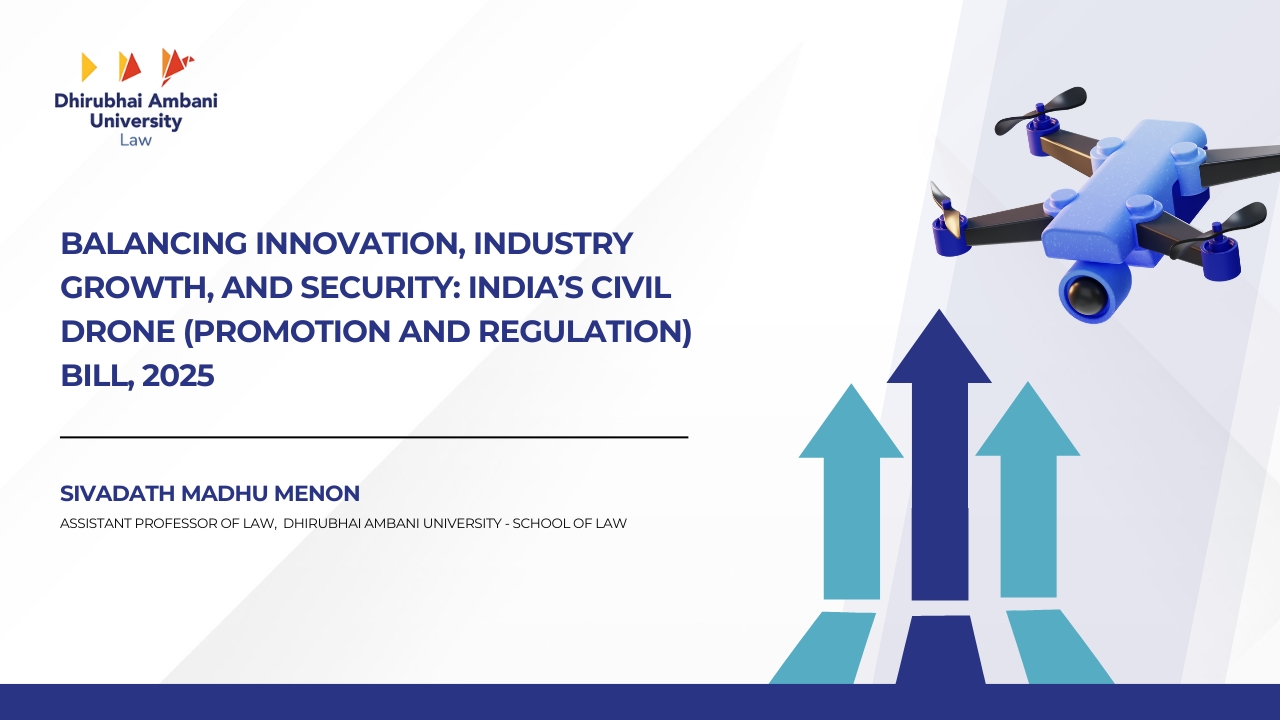
The introduction of a dedicated statute for drones underscores the recognition of this sector as a distinct component of civil aviation and the broader technology ecosystem. By mandating type certification, registration, and compulsory third-party insurance, the Bill aims to align drone operations with established aviation safety standards. Additionally, the establishment of a statutory compensation framework provides clear remedies in the event of accidents, thereby enhancing public confidence in drone operations.
A notable feature of the Bill is its acknowledgment of Beyond Visual Line of Sight (BVLOS) operations. While operational details are yet to be defined through future rule-making, the Bill provides a legal foundation to support commercial applications such as long-range logistics, delivery of medical supplies, and precision agriculture. This recognition signals India’s intention to foster innovation and expand the commercial utility of drones.
Despite its promise, the Civil Drone (Promotion and Regulation) Bill, 2025 raises several regulatory concerns. A substantial portion of the operational framework is left to delegated legislation, which may create uncertainty for businesses and investors regarding compliance requirements, operational costs, and long-term planning.
The Bill also adopts a strict enforcement approach. Several contraventions are designated as cognizable offences, drones may be detained on suspicion for limited periods, and liability extends to financiers and associated entities. While intended to strengthen deterrence and ensure accountability, these provisions carry the risk of discouraging legitimate operators and could impose a chilling effect on startups and small enterprises.
Furthermore, the Bill does not provide explicit exemptions for research and development activities. Previous regulatory instruments allowed for prototype testing and academic research, enabling experimentation and innovation. The absence of similar clarity in the present Bill may hinder the growth of indigenous drone technology at a time when India aspires to become a hub for manufacturing and technological development in this sector.
From a national security perspective, the Bill addresses valid concerns. India’s high urban density, critical infrastructure, and sensitive borders necessitate robust oversight mechanisms. However, excessive criminalization and fragmented regulatory structures may inadvertently constrain the growth of the sector.
The global drone industry is poised for significant expansion, with projected market value running into billions of dollars. To secure a competitive position internationally, India’s regulatory framework must not only safeguard security but also encourage entrepreneurship, attract investment, and facilitate international collaboration. Overly restrictive or ambiguous regulations risk driving innovation abroad, limiting domestic growth, and reducing India’s potential to become a global leader in drone technology.
